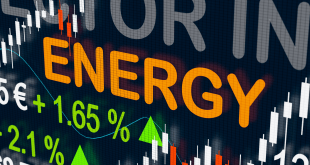Oil prices surged more than 3% on Thursday, marking their strongest daily gain in weeks, as optimism over a potential U.S.-European Union trade deal and fresh U.S. sanctions on Iran stoked concerns about future supply constraints.
- Brent crude futures settled $2.11 higher, or 3.2%, at $67.96 a barrel
- West Texas Intermediate (WTI) closed $2.21 higher, or 3.54%, at $64.68 a barrel
Both benchmarks advanced around 5% for the week, their first weekly gain in three weeks. Thursday marked the final settlement session ahead of the Easter holidays, with trading volumes relatively light.
Trade Progress and Sanctions Support Bullish Momentum
Market sentiment was buoyed by remarks from U.S. President Donald Trump and Italian Prime Minister Giorgia Meloni, who met in Washington and expressed optimism about resolving transatlantic trade tensions.
“We’re going to have very little problem making a deal with Europe or anybody else, because we have something that everybody wants,” Trump said.
Energy analysts noted that a trade breakthrough could reduce the negative demand impact of U.S. tariffs, helping to stabilize oil consumption globally.
“Reaching a deal with the EU could potentially limit oil demand destruction from Trump’s tariffs,” said Bob Yawger, director of energy futures at Mizuho.
U.S. Sanctions Raise Supply Risks
Supply-side concerns also escalated after the U.S. issued new sanctions targeting Iran’s oil exports, specifically including measures against Chinese “teapot” refineries—small, independent refiners that often import discounted Iranian crude.
“These are far-ranging sanctions, focusing on the Chinese teapot refineries,” said John Kilduff, partner at Again Capital. “It’s a potential supply loss to the market.”
The U.S. Treasury also blacklisted multiple companies and vessels involved in facilitating Iran’s shadow oil trade with China, part of a broader strategy to restrict Tehran’s access to oil revenue amid stalled nuclear negotiations.
“The U.S. continues to aggressively sanction Iran and impose sanctions against buyers of Iranian oil,” noted analysts at Gelber and Associates. “OPEC+ has also provided reassurance to the market, stating that they remain in control with flexibility to cut production if needed.”
OPEC and Global Demand Outlook
On the supply management front, OPEC said on Wednesday it had received updated output cut plans from Iraq, Kazakhstan, and others, aiming to offset recent overproduction.
However, despite the bullish catalysts, outlook risks remain elevated. This week, OPEC, the International Energy Agency (IEA), and several major investment banks, including Goldman Sachs and JPMorgan, revised down their oil price and demand growth forecasts. The moves came amid concerns that escalating tariff conflicts are disrupting global trade flows and weakening consumption patterns.
Market Outlook
While near-term prices have rebounded on sanction-induced supply fears and progress in trade diplomacy, markets remain highly sensitive to:
- The trajectory of U.S.-led trade negotiations
- The outlook for global economic growth
- The ability of OPEC+ to maintain market balance
As the second quarter progresses, traders will likely continue to weigh geopolitical developments against evolving demand-side risks, particularly in China and other emerging markets.
 Noor Trends News, Technical Analysis, Educational Tools and Recommendations
Noor Trends News, Technical Analysis, Educational Tools and Recommendations





